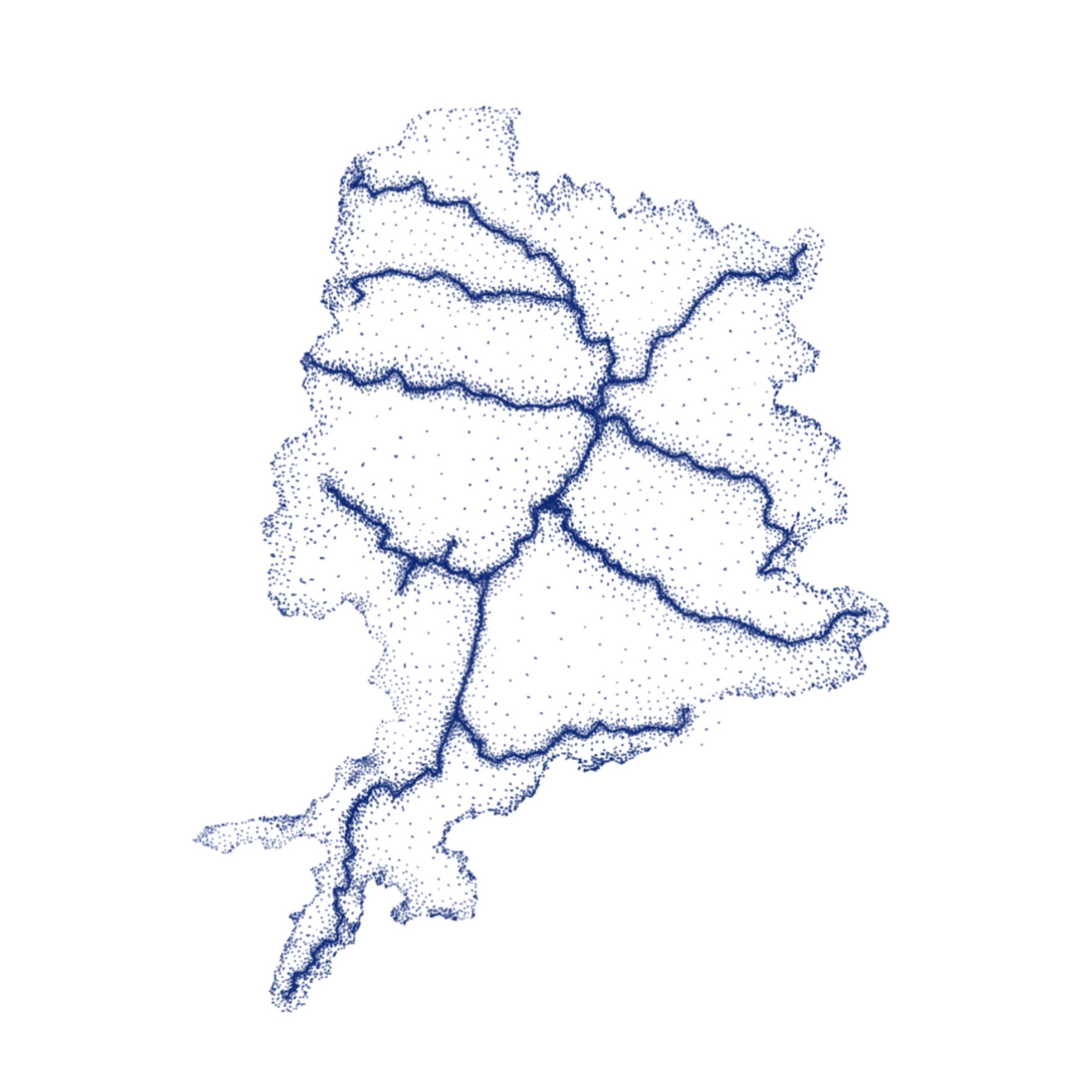How do you define the watershed? “Ask a raindrop...”
By Casey Merkle
“Ask a raindrop…” was Dilip da Cunha’s response to my asking, how do you define the watershed?
Dilip da Cunha is a renowned landscape architect and the author of The Invention of Rivers, a beautifully sombering publication that looks at the ways in which humans have constructed the idea of a river, from it’s meaning in languages and cultures, to how they are built, maintained and managed; and to how we must embrace wetness as a solution to mitigate and prepare for climate catastrophes.
-
I have not been prioritizing writing for the last few months and it has led to immense frustration with myself. But, I felt the urge to let that go after this week. I’m writing this with a heavy heart, having seen the aerial shots over Vermont, USA. In Montpelier, streets are completely underwater with buildings sticking out in a way that reminds me of an old computer keyboard - straight edges and structured into neatly lined rows. I asked myself, what happened and why?

Floods. The rising of waters high enough to interrupt human activity. When sudden and unexpected, these fast, rising waters can lead to loss of life.
I attended a lecture not too long ago from Dilip. He explained that flood is a human-caused and constructed phenomenon. It is not an explanation meant to invalidate anyone who has experienced loss from flooding. Dilip’s goal is rather to shift the ways in which western culture thinks about the separation between land and water.
Flood is a very real, human experienced and created phenomena, with flood meaning more than an event, it is a reckoning. How I think of floods is closely linked with the story of Noah’s Ark. I’m saying this from an observer standpoint and not someone that participates or has ever fully read the story (though maybe I should if I’m going to relate to it). Each flood is a mirror reflecting mistakes back to us. If only floods had a reflective surface rather than murky water filled with sediment, then this metaphor would be perfect. A flood is a story that explains when a system is separate from nature, is not a working system, and is bound to fail. It is bound to end. It is bound to be swept away, just like in Noah’s Ark.
After seeing the devastation from the floods in Vermont, many questions are rising to the surface… How do you move an entire community that has lived in a valley for over a century, surrounded by mountain ranges with the potential for copious amounts of water to rush down into the deepest, and lowest parts of the watershed? How do you turn the clock back to prevent development in an area that is prone to floods? How do you turn the clock back to prevent a society from exercising control over rivers? Humans are so dependent on the ways in which water supports our life, through the mind, body, spirit, and also through transportation and trade. It is a tricky balance that requires an understanding that rather than constraining a river to a line, allow it to be a rising and falling wetness.
“Is flood a water that overflows the banks of a river?” asks Dilip in response to my follow-up to him. I described that flood is this concept requiring a radical acceptance of wetness rather than a fear. It is begging us to soak deeper and understand the ways in which water moves, and how it is held.
Dilip continues, “Or, is flood the result of not appreciating a wetness that is everywhere in place of water somewhere? The fact is that wetness holds in multiple places--plants, soils, air. If we had to respect these avenues of the raindrop and increase their holding, we would not experience the violence that follows from trying to contain water to the channel of a river.”
-
Where are the wettest parts of the watershed? “Ask a raindrop...” Follow the path of the raindrop and it will show you where wetness collects. Ask a 100-year storm and it will warn you to stay out of these areas, avoiding flood. That is the approach for now. What the future holds, only the raindrops may know.

Raindrops across the Winooski River Watershed, Copyright Casey Merkle, 2023.
Resources:
da Cunha, D. 2018. The invention of rivers: Alexander’s eye and Ganga’s descent. University of Pennsylvania Press. ISBN 978-0-8122-4999-6. URL:www.upenn.edu/pennpress/book/15913.html
da Cunha, D. Where does decolonizing begin? (Lecture, 2023).
URL: https://liberalartsmasters.risd.edu/ncss/events/dilip-da-cunha/
Photo courtesy of: Erin Petenko and Fred Thys, July 11, 2023. In Montpelier, stranded motorists and worried shop owners. The Vermont Digger. URL: https://vtdigger.org/2023/07/11/in-montpelier-stranded-motorists-and-worried-shop-owners/